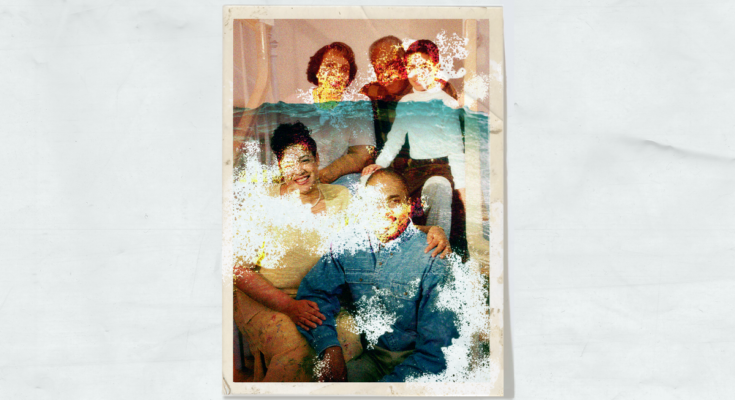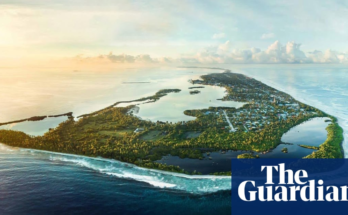Throughout 2021, a slew of hurricanes, floods and forest fires brought one fact into sharp focus: The climate crisis isn’t a problem for the future, it’s a problem for right now.
In the US and across Europe, many are just waking to this realization. But countries in the developing world — often referred to as the Global South — have been feeling the effects of global warming for years or even decades.
For Ineza Grace, a 25-year-old activist and environmental engineer from Rwanda, the climate crisis she felt growing up has shaped her entire career. “I have the memory of waking up in the middle of the night to save my life as intensive rainfall and wind destroyed my family house ceiling when I was a kid,” she said.
Watching the news as a teenager, Grace saw that she wasn’t alone. Flooding and erosion have displaced women and children throughout Rwanda. Grace had to learn how to protect her community. Instead of studying to be a pilot or mechanical engineer as she’d dreamed, she switched focus to study environmental engineering.
What Grace experienced when her ceiling caved in, and others confront when losing their homes due to human-induced climate change, is known as “loss and damage.” It refers to the immediate harm caused by global warming that can’t be prevented or stopped. Until 2021, loss and damage was a niche concern, often sidelined and pushed off the agenda in climate talks by wealthy countries, such as the US and in Europe. These countries, historically responsible for the majority of emissions, are being asked by small island states and other countries in the Global South for compensation — and they don’t want to pay.
“Bad things are already happening,” said Saleemul Huq, director of the International Centre for Climate Change and Development. “And in our lifetimes — yours and mine — we’re not going to stop them, it’s going to get worse.” Even with mitigation and adaptation measures, a certain amount of damage is inevitable. If we can’t stop it, added Huq, we should at least try to understand it.
Pressure is building, and 2022 could well be the year real progress is made on loss and damage. An important outcome of the Glasgow Climate Pact (the global accord struck in November at the COP26 climate summit) was the inclusion of a “loss and damage dialogue,” a two-year process in which funding will be discussed.
This isn’t a sudden sea change. It’s been a long and slow road to get wealthy countries to recognize their complicity. The next step is to transform this “dialogue” into funding.
The stakes are high. Millions are being displaced by the climate crisis. If they don’t receive funding to rebuild, a climate-fueled refugee crisis as people flee weather-related catastrophes will ensue.
With the right funding, much of the damage caused by human-induced climate change can be repaired. The losses, meanwhile, can’t. Human lives, cultures, entire species and ecosystems lost to the climate crisis will be gone forever.
What we mean when we talk about loss
Loss and damage is the third pillar in the climate crisis solution alongside mitigation (trying to prevent temperature rises) and adaptation (making changes to protect against those rises). All three must be prioritized, but wealthy, developed countries have long resisted the idea that loss and damage is a separate issue, rather than just another facet of adaptation.
Among the first to sound the alarm about loss and damage to the global community were small island nations. Rising sea levels mean that low-lying islands in the Pacific and Indian Oceans will eventually be completely submerged. This isn’t a prediction. It’s already happening.
Gladys Habu, from the Solomon Islands, was 19 when she returned in 2014 to a place she’d visited regularly as a child. On the neighbouring island of Kale, where her grandparents had lived, she discovered its white sand beaches and lush forests were nowhere to be found. All that remained were some branches poking out of the water, hinting at a formerly pristine landscape now obscured beneath the waves.
“It was very heartbreaking for all of us because it happened so suddenly,” she said. “We were shocked and, to this day, I still can’t believe how fast we lost Kale. Kale was a beautiful island so full of life and rich biodiversity, but it was also a huge part of our identity and connection to our history that was lost.”
The loss and damage Habu, Grace and other young people around the world are experiencing in real time, from a very young age, are motivating their activism and bringing them together.
Yusuf Baluch was born into an indigenous community in the Pakistani province of Balochistan. He was 6 when he had to leave his village in the middle of the night after his house was flooded. His family lost everything and had to sleep in the open air without even blankets to cover them until they were resettled, he said.
Now 17, Baluch wasn’t surrounded by other climate activists growing up, but climate activist Greta Thunberg and his own experiences inspired him to start his local branch of Fridays For Future, a youth-led climate strike movement. Grace, meanwhile, is a co-director of the Loss and Damage Youth Coalition, which advocates for climate justice and has more than 200 members worldwide. “We will only have a future if we work on this together,” she said.
Residents at an evacuation center in the Philippines following a typhoon in 2020.
Even loss isn’t a singular issue — it has economic and non-economic impacts. Growing up in the Philippines, 24-year-old climate justice activist Mitzi Jonelle Tan lost many months of school due to the impacts of typhoons. But it also cost her much more: “Growing up afraid of drowning in my own bedroom means I lost a childhood where I felt safe and secure,” she said.
These non-economic losses have no adequate adaptation strategy, Baluch said. “If I lost my culture, I wouldn’t be able to adapt to it in a different way in a different area,” he said. “If I lost my language, I won’t be able to adapt to it. If I’m dying of starvation, if I’m dying of floods, if I’m dying of drought, you won’t be able to ‘adapt’ me after dying.”
The real-time impacts of loss and damage on people around the world are spurring campaigners to ensure it’s recognized as its own priority. “We have to support them,” said Harjeet Singh, senior adviser at Climate Action Network International. “We have to respect their human rights.”
Loss and damage on the doorstep
In order to appreciate the full scale of loss and damage occurring right now, it’s necessary to view local incidents as part of a bigger picture. Incidents such as the tornado that killed 88 people in Kentucky last month aren’t isolated events.
“Mozambique has a flood right now,” Huq said. “Madagascar has a famine right now. These don’t make the headlines. The developing world impacts which have been happening for years don’t make global headlines. But 88 people in America make global headlines — and there’ll be more.”
Just like other extreme weather events, the tornado wasn’t caused by climate change and isn’t an unusual event in and of itself, Huq said. But its magnitude, timing and intensity were unusual and caused by human-induced climate change — something we should expect to become increasingly common.
“Every single day from now on, an extreme weather event will break a record. A flood, a cyclone, a heat wave will occur somewhere in the world which has never happened before,” he said.
In some cases, he added, those records will not just be broken but shattered — as was the case with the heat dome that settled over western Canada last July, which broke historic heat records multiple days in a row, pushing temperatures in British Columbia to 104 degrees Fahrenheit.
But there are a couple of key differences between the impacts felt in the US and those felt in the Global South. First and foremost, the US historically is the world’s largest emitter of greenhouse gases with an economy built on the back of polluting industries. The impacts it’s now experiencing are the consequences of its own actions (something that’s also true of other wealthy countries).
Houses destroyed in December 2021 when a tornado swept through Kentucky.
The same can’t be said of countries in the Global South, which have done little if anything to contribute to the climate crisis and yet have been first and worst affected.
“We contribute almost nothing, yet face losses that are often irreplaceable,” Habu said. “My greatest fear is that the ignorance from global leaders will drown many more of our islands and cause a grave change in our geographical nature.”
The second big difference is money. This year, when catastrophic floods swept through Germany, the government allocated 30 billion euros (roughly $35 billion) to rebuild. Likewise, following the tornado last month in Kentucky, President Joe Biden promised federal funding would cover 100% of the cost of cleanup.
“That is compensation for loss and damage from human induced climate change,” Huq said. “They don’t know it. The language I’m using you will not see on CNN or on BBC. But that is what is happening.”
In developing countries, there is no such money for rebuilding. These countries are not only overwhelmed by extreme weather events, said Asad Rehman, director of War on Want, but also resources that are limited, largely because their money is tied up in unsustainable debt repayments to the global north.
The German flooding bill alone shows just how costly paying for loss and damage will be. The spiraling damages will stretch to trillions of dollars every year, and developed countries have drawn a line in the sand, saying they will not help paying for them, Rehman said.
“The United States is probably the most vociferous on that side,” he said. “[It] absolutely will not accept any agreement within the climate negotiations that basically makes it liable for the impacts that would happen right now, and, of course, when we breach the 1.5 degree guardrail, which looks increasingly likely within the next five to 10 years.”
For the US, loss and damage has long been a euphemism for liability and compensation, Huq said, something it’s resisting at all costs. In 2016, the US Secretary of State John Kerry made it a condition of the US signing up to the Paris Agreement that loss and damage couldn’t be used for liability and compensation.
Small and developing countries were given little choice but to accept the language, but their fight for loss and damage isn’t based on liability and compensation. “Our argument is based on solidarity and humanity,” Huq said. “We’re saying, ‘you’re giving your own citizens money for loss and damage, but you’re not giving us any money. Is that fair? Is that right? Where’s your humanity for citizens around the world who have been affected?'”
The life-or-death fight for funding
The cost of loss and damage might seem impossibly expensive, but the response to the COVID crisis, which has seen the speedy mobilization of trillions of dollars over a very short timeframe, is evidence that it isn’t impossible. “There are a number of ways that we can raise money,” Singh said. “But the fact is, there has not been any political will to do that.”
But COVID has also shown how reluctant those countries are to share wealth and take a global approach to solving a global problem. The refusal to lift patents on vaccines and ensure vaccine rollouts happen in developing as well as developed countries does little to engender hope in those fighting for climate justice in poorer countries.
“Here’s a live issue where the rich countries actually benefit from helping us because it prevents mutations of this virus, and still they won’t give us the bloody vaccine,” Rehman said. “It’s so ingrained into our political and economic system, this idea of the disposability of parts of the world, of people.”
The consequences of failing to respond to financial requests for loss and damage puts a huge question mark not only over the so-called global leadership of rich countries, but also over the entire Paris Agreement, Singh said.
“Our ultimate motive or goal is to keep people safe and the planet safe and thriving,” he said. “People are already getting impacted — they’re losing their homes, incomes and farms, which means that this agreement is failing, as simple as that. And if we cannot offer support to people who are impacted now, how do I trust leaders who are saying we will decarbonize by 2050?”
Progress at COP26
Singh and Huq have played active roles in the long-running fight to get loss and damage on the global agenda. It was first mentioned at COP13 in Bali in 2007, after many years of campaigning by small island states. Bumping it further up the agenda has been an arduous journey.
But COP26 saw a major breakthrough, Singh said. To start with, it wasn’t even on the agenda. But following pressure from civil society groups, Nov. 8 during the conference was designated Adaptation, Loss and Damage Day.
It might have seemed like a superficial change, Singh said, “but at least it was symbolic from our perspective that the recognition is coming.” Inside and outside the summit, activists and campaigners doubled down on the theme, staging events, presenting petitions and speaking with negotiators. It became “a litmus test for the success of COP26,” Singh said.
By that definition, COP26 and the Glasgow Climate Pact it delivered weren’t a resounding win. The demand from climate justice activists and civil society groups was for political recognition of the need for climate finance to cover loss and damage and for the establishment of a Glasgow facility that would kickstart the funding needed.
On the first point, they succeeded — loss and damage were recognized within the text. But on the second point, they didn’t. The original language was watered down from establishing a “loss and damage facility” to a “loss and damage dialogue,” following pressure from the US, backed by the EU.
There was so much hope going into COP26 that world leaders were finally catching up, said Teresa Anderson, climate policy coordinator at ActionAid International. That turned out not to be the case, she said. “The wealthy countries most responsible for warming the world, particularly the US, blocked any progress on loss and damage finance.”
Developing countries wanted to refuse to accept the last-minute change in language, but were ultimately unable to withstand pressure exerted by the US and other wealthy countries, Rehman said. “It’s basically lots of arm twisting,” he said. “Unfortunately, it’s just the reality of the negotiations.”
John Kerry and COP26 President Alok Sharma negotiate in a huddle in the final hours of the UN climate summit in November 2021.
This “uneasy compromise,” as Rehman described it, was devastating to many smaller countries, especially the island states, who had come to COP26 with a loss and damage facility as their priority. “In that moment, that request for help being denied just makes you recognise how little value they and their citizens have in this world that we’ve created,” Rehman said.
Tan described the “clear and outright betrayal” she felt at the outcome. “It angers me knowing that they are deliberately preventing justice and ignoring the lives of millions being impacted today,” she said.
One bright spot in the darkness was a move made by Scotland’s First Minister Nicola Sturgeon on the sidelines of the summit. Sturgeon announced that Scotland would be donating 1 million pounds from its Climate Justice Fund to loss and damage, challenging other leaders to do the same. “Nobody wanted to talk about it,” Singh said. “She actually broke that taboo, and everybody started talking about it.”
The amount in the fund might be small and nowhere near what is needed, but at least it got the ball rolling, said Huq, who met with Sturgeon one-to-one during the summit. “She gets it,” he said. “She makes no bones about saying: this is reparations, this is not charity, it’s not giving to poor people just because we feel bad for them. It is giving it as a reparation and challenging other leaders to step up. Nobody stepped up yet, but the challenge remains.”
Bringing loss and damage to the forefront in 2022
Campaigners for loss and damage financing hope that the fund started by Sturgeon will snowball this year, as other countries show increasing interest in tackling the problem. The EU as a whole sided with the US on the issue at COP26, but progressive leaders from Germany, Denmark, Sweden and Ireland want to explore what’s possible.
Now, activists are planning for the next summit, which is set to take place in Sharm-el-Sheikh, Egypt, in November.
“Looking ahead to COP27 in Egypt, the fight will continue,” Anderson said. “The women and girls, indigenous communities, and smallholder farmers in the Global South, who are being hit hardest by a crisis they did the least to cause, will not let this issue rest.”
It makes a difference that the next summit will be held in Africa, Singh said. “It’s a COP of the vulnerable people, and you cannot not talk about the issues that are most pressing for vulnerable people.”
Pushing loss and damage to the forefront at COP27 will involve envisioning what a funding facility should look like. This means engaging with the governments likely to push back ahead of time. Wealthy countries like to argue that they haven’t been instructed by their citizens to fight for loss and damage, Singh. They use this as a reason to resist it. “We would like to engage with them and say, go and get the mandate,” he said.
This is especially crucial within the US. “The problem with the US is not just inaction on their part, but discouraging others to act,” Singh said. “Many countries hide behind the US — Australia, Canada, Japan. If the US moves, everybody is going to fall in line.” It’s time for the US citizens to hold their governments and corporations to account over denying and delaying climate action, he added.
Tan said that while she has little confidence in the leaders of developed countries, she does have faith in the people of those countries who are standing in solidarity with the global youth movement and activists from the Global South. “It is through people that we will see changes made,” she said.
Anderson pointed to the marches that took place at the summit, which brought tens of thousands of people out onto the streets demanding that world leaders acknowledge the devastating toll of the climate crisis on communities in the Global South. “Governments really felt that pressure,” she said.
Protestors at COP26 in Glasgow.
Baluch advises those who want to support the fight for loss and damage to educate themselves about what’s happening around the world. “I know it’s not possible to feel the pain of the people being impacted, but you can actually know about the people,” he said.
Grace, meanwhile, said she does have faith — “too much faith, to be exact” — that countries will come through and meet their targets. “I believe with proper collaboration and listening to the needs of the frontline communities, the world will be able to fulfil the promises,” she said. “I won’t lie to myself and say it will be easy… but as we like to say: ‘Small steps to achieve climate justice.'”



